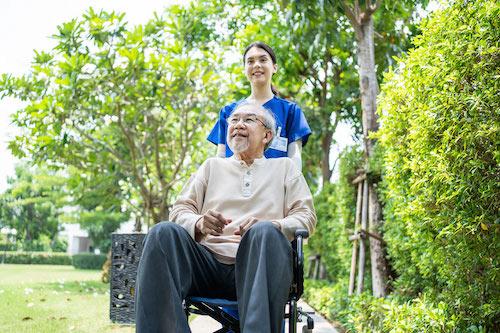
Connecting Seniors with Volunteers for Ad-hoc Tasks
Woodlands Health Campus (WHC) is an 1,800-bedded purpose-built Campus comprising of a fully integrated acute and community hospital, specialist outpatient clinics, and long-term care facilities. It is slated to open progressively from 2023.
WHC aims to reinvent the way care is delivered and provide seamless integration of care within and beyond hospital walls. To achieve this, WHC will be leveraging SMART technology to enhance care within the hospital, and extend the reach of WHC healthcare professionals into the community to partner and empower residents in their health journey. WHC has started serving the community through health talks, fitness sessions, health coaching and community nursing posts.
In this project, WHC would like to develop a solution to serve elderly residents, especially those living alone in rental flats, who occasionally need help with ad-hoc tasks (fix electrical appliances, move furniture, buy groceries, buy food, buy yakult, etc).
The students developed BangWo, a platform to connect seniors with other members in the community that could assist them in completing various tasks, such as fixing electrical appliances, shifting furniture, buying groceries, etc.
A senior who needs help can use this platform to send out an ad-hoc request for help. Any volunteers who happen to be nearby at that time, can help the senior with the tasks required.
In the process, the students have met the learning outcomes of the SMU-X course. In their own words:
We integrated knowledge from two or more disciplines to solve a problem, by integrating basic design thinking methodologies from the Interaction Design and Prototyping course, knowledge of project management from Software Project Management, and coding skills from Web Application Development.
Enhancing our communications skills. One area we learned from the experience communicating to WHC is that the simplest explanation is quite often the best explanation. Quite often, we were tempted to explain how or why certain aspects of our app would be built in a specific way, but at the end of the day not only would this just confuse them due to their non-technical background, it would not achieve any actual objective of the project. For this reason, we kept all explanations as simple as we could and often resorted to “show, don’t tell”, where we would simply show WHC an example of what we were doing or talking about, and letting them ask us questions about areas they were interested in.
Being more open-minded and sensitive to individual differences. Our team, though only consisting of 4 people, was actually quite diverse, with 1x from SMT, 1x from CS, and 2x from IS. This meant we had a team that had a fairly mixed set of experiences and focuses. Our team made this diversity in experience work by focusing on who could best contribute to specific areas of the project. Due to their increased focus on coding, Izzat and Sheffield were designated to back-end coding, while Sebastin and Joshua were assigned tasks more suited to the front-end programming. This suited everyone’s interest and abilities well. Whenever we had differences in opinion, we would discuss during an online meeting where we could clearly listen to one another and articulate our thoughts. More importantly, when a decision was made, we would collectively stick with it as a team unless we agreed at another time to make a change. Our cohesiveness and flexibility as a team ensured we had no major conflicts and were able to work together smoothly, consistently, and in collaboration with one another.
“This course has inspired students to unleash their creative energies, their youthful idealism, their capacity to dream, by creating visionary technology to conquer a real-world societal challenge. They have braved this journey into the unknown and left inspired to reflect deeply and broadly about how they, as global citizens, can harness the power of Cyber-Physical Systems as a potent force in the service of humanity.” -- Pius Lee, Faculty instructor, School of Computing and Information Systems, SMU
"The highlight of this course was improving people's lives, making people awesome with Cyber-Physical Systems, and developing an actual system to do that. I learnt how to build solutions that will have social impact on society. Technology is useless if it os of no benefit to society. Besides thinking what technology we can build to solve social issues, we should also consider how to make the solution cost-effective. Technical skills are important, but so are soft skills such as speaking and presentation skills. Focus more on the human person, rather than the technology itself. SMU-X courses are about preparing for uncertainty, because things don't always go as planned. I learnt how to be creative as well as empathetic when thinking of solutions to help the less fortunate members of the community." -- Student from the CS460 Foundations of Cyber-Physical Systems course